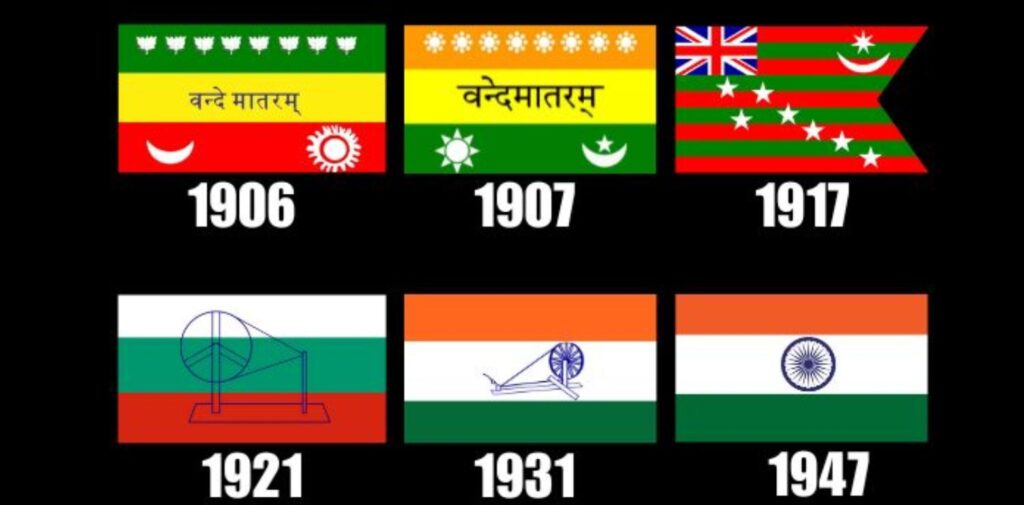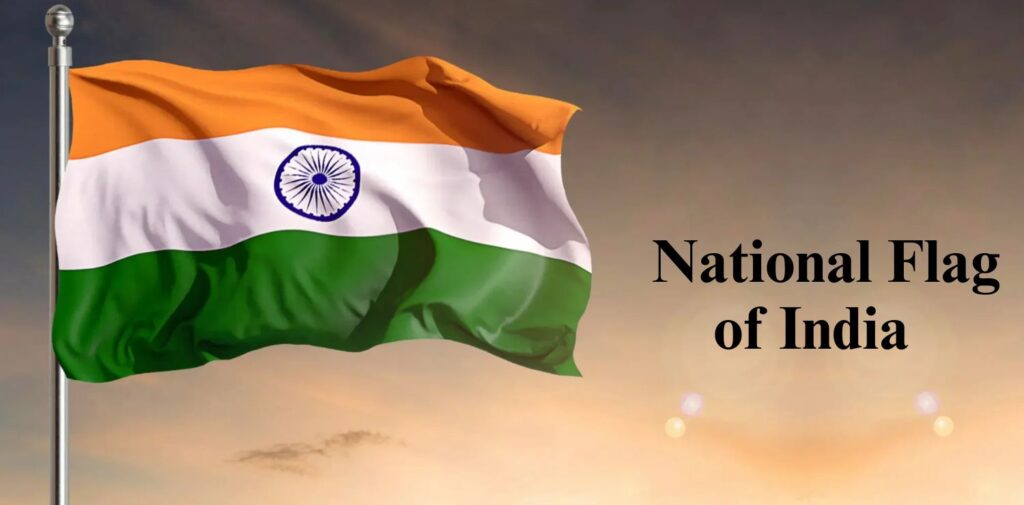The Indian flag is not just a piece of cloth; it carries the dreams, struggles, and aspirations of millions of Indians. Its evolution from the early 1900s to the independence of India in 1947 tells a captivating story of our nation’s journey towards freedom. This article will take you through the History of Indian Flags where each flag that represented India during this transformative period, explaining what they symbolize and how they reflect the spirit of the Indian people.
The Beginnings: 1904-1906
The First Flag: The Calcutta Flag (1904)
In 1904, a group of Indian nationalists in Calcutta (now Kolkata) raised the first flag representing the Indian struggle for independence. This flag was designed by Suresh Chandra Banerjee and was made of red and yellow silk. The red represented the courage of the Indian people, while the yellow symbolized peace and harmony.
Features of the Calcutta Flag:
- Colours: Red and Yellow
- Symbols: The flag featured a sun and a crescent moon, representing hope and the possibility of a new dawn for India.
This flag marked the beginning of a visual representation of India’s struggle and served as a source of inspiration for many who wished to see India free from British rule.
The Banner of Indian National Congress (1906)
Just two years later, in 1906, the Indian National Congress introduced another flag during the annual session in Calcutta. This flag was a tricolour of red, green, and yellow horizontal stripes. The green represented the Muslim community, red represented the Hindu community, and yellow symbolized peace.
Features of the 1906 Congress Flag:
- Colors: Red, Green, and Yellow
- Symbolism: The flag aimed to unite different communities in India and highlighted the importance of Hindu-Muslim unity in the fight for independence.
Although this flag did not have a specific symbol, it was the first instance of a tricolour representation in Indian flags, which laid the groundwork for future designs.

1917-1931: Emergence of New Symbols
The Home Rule Movement Flag (1917)
The Home Rule Movement, led by Bal Gangadhar Tilak, aimed to attain self-governance for India. The flag adopted during this movement was similar to the previous one but featured a Union Jack in the corner, representing India’s ties to Britain. The flag was a tricolour, with green at the top, red in the middle, and yellow at the bottom.
Features of the Home Rule Movement Flag:
- Colors: Green, Red, and Yellow
- Symbolism: The flag represented the aspiration for self-rule and indicated that Indians were ready to govern themselves.
The Khilafat Movement Flag (1920)
The Khilafat Movement was an important part of the Indian freedom struggle, particularly among Muslims. The flag of this movement featured green with the crescent moon and a star, symbolizing Islam.
Features of the Khilafat Flag:
- Colour: Green
- Symbols: Crescent Moon and Star
- Symbolism: This flag represented solidarity among Muslims and emphasized their role in the struggle for independence.
The Indian National Congress Flag (1931)
The year 1931 marked a significant change in the design of the Indian national flag. The Indian National Congress adopted a new flag with three horizontal stripes—saffron at the top, white in the middle, and green at the bottom. In the centre was a Chakra (wheel) with 24 spokes, which represented the wheel of law and progress.
Features of the 1931 Congress Flag:
- Colours: Saffron, White, and Green
- Symbol: The Ashoka Chakra
- Symbolism: The saffron at the top symbolized courage and sacrifice, white stood for peace and truth, and green represented faith and chivalry.
This flag became widely recognized and served as a unifying symbol for Indians fighting for independence.

1947: The Final Evolution
The National Flag of India (1947)
Finally, on August 15, 1947, India gained independence, and the flag was officially adopted as the National Flag of India. The design remained largely the same as the 1931 flag but was now a symbol of a free nation.
Features of the National Flag:
- Colours: Saffron, White, and Green
- Symbol: Ashoka Chakra
- Symbolism:
- Saffron: Courage and sacrifice
- White: Peace and truth
- Green: Faith and chivalry
- Ashoka Chakra: Represents the eternal wheel of law and righteousness.
This flag represents the unity and diversity of India. It embodies the struggles and sacrifices made by countless individuals who fought for the country’s freedom.
Conclusion: History of Indian Flags
The journey of Indian flags from 1904 to 1947 reflects a rich tapestry of history, struggles, and aspirations. Each flag represents a significant chapter in India’s fight for independence, showcasing the diverse cultures, religions, and languages of the country.
From the Calcutta Flag, which was the first visual representation of the freedom struggle, to the National Flag of India which symbolizes the unity of a free nation, each design holds a unique story and meaning.
As we look at the tricolour fluttering proudly today, we remember the sacrifices of our forefathers and the journey that brought us to this moment. The Indian flag is not just a national symbol; it is a reminder of our collective identity, resilience, and the ongoing pursuit of peace and progress.
So the next time you see the Indian flag, take a moment to reflect on its history and the values it represents. It is a flag that embodies not just a nation, but the spirit of millions of people who came together to fight for a brighter future.




